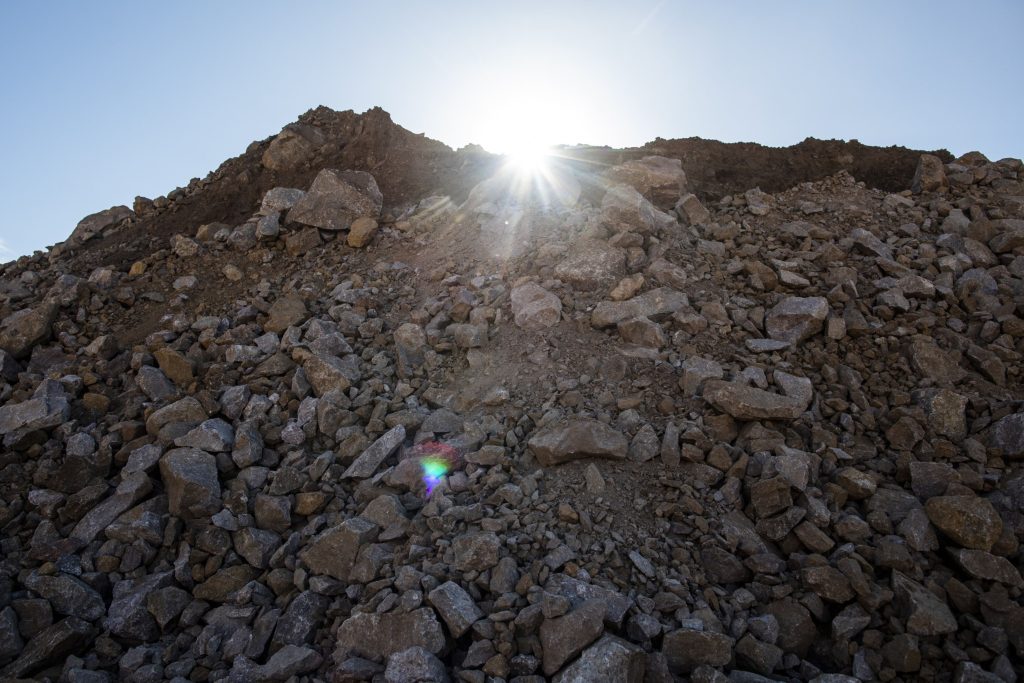The world’s biggest miner is trying to figure out if tiny rock-eating microbes can help it solve a notoriously difficult climate puzzle — how to cut emissions from steelmaking.
Most steel today is made in blast furnaces powered by coal, the dirtiest fossil fuel, but there’s a way to refine the metal using less polluting natural gas or hydrogen in a process called the “direct reduced iron” (DRI) method, that reduces iron ore to iron without melting it.
The problem is that the greener process only works on high-quality iron ore, and most of BHP Group’s iron ore comes from the Pilbara region in Western Australia, where the raw material contains too much phosphorus, alumina and other impurities to be refined using anything but coal.
That’s why BHP has enlisted the help of Boston-based Allonnia, a biotech startup backed by, among others, Bill Gates.
Allonnia discovered that BHP’s iron ore contained phosphorus-consuming organisms that could kickstart the refining process naturally, said Paul Perry, vice president of innovation at BHP. “All living things eat phosphorus,” he said, but this particular microbe also shakes loose alumina from the ore.
If these critters’ services could somehow be harnessed and scaled up, they could be let loose on giant mounds of iron ore, where they would proceed to eat the unwanted gunk — known as “gangue” — and create a product good enough for most of the hydrogen-powered steel mills being developed. Most hydrogen is produced using fossil fuels today, but if it’s manufactured using 100% clean energy, then the steelmaking process could eventually be entirely carbon-free.
Reducing the phosphorus and alumina content could bump up the purity of the iron ore from 62% to at least 65%, bringing it much closer to the grade needed for less carbon-intensive DRI refining processes, according to Perry. Still, he stressed that it’s “way too early” to celebrate, saying the move from laboratory testing to large-scale operations would be a major leap.
Allonnia has other specially crafted microbes in trials to clean up dangerous chemicals that can linger forever in wastewater and soil. The startup’s chief commercial officer Chuck Price said it plans to start a small-scale trial of the new technology with BHP in 2024. “Depending on its success and the lessons we learn, we aim for development of a full-scale plant from there,” he said.
BHP isn’t the only miner exploring ways to reduce emissions generated from making steel. Rio Tinto is exploring the use of biomass and microwave energy to create a less carbon-intensive process capable of handling lower-grade ore. Fortescue Metals Group Ltd. is working with Japan’s Mitsubishi Corp. and European steelmaker Voestalpine AG on a hydrogen-based pilot plant in Austria, where it will test refining different grades of ore. Both Rio and BHP are also experimenting with a three-step process that uses an “electric smelting furnace” to improve the quality of iron that comes out of a DRI plant.
Steel is needed to make everything from bridges to electric vehicles. Producing it is responsible for an estimated 8% of global greenhouse gas emissions a year, and finding ways to cut those emissions is crucial if the world is to avoid catastrophic global warming. BHP aspires to reduce its Scope 3 emissions — that is, the emissions of customers when they use its products — to net zero by 2050. It’s a huge task, given its current Scope 3 emissions are equivalent to an eyewatering 365 million tons of CO2 a year, or almost as much as the entire UK emits in a year. Reaching net zero would require most of the steel made by its customers to be green by that date.
Developing greener production methods is especially important for Australian miners like BHP, whose lower-grade iron ore risks becoming obsolete in a world dominated by green steelmaking techniques. They “need to either find a way to improve the quality of that Pilbara ore or look at technologies that allow the use of lower grade iron ore,” said Simon Nicholas, a Sydney-based steel sector analyst at the Institute of Energy Economics and Financial Analysis. DRI is by far the most advanced green steel technology, he said, but it relies on a grade of iron ore that makes up less than 5% of today’s global supply of the steelmaking material.
Still, which green steel method could dominate remains an open question. Miners and steelmakers have to choose their technology pathways based on the resources at hand, and most of these innovations may not be mature until the 2030s. Last month, Tata Steel Ltd. said it won’t be able to reach its 2030 emissions intensity reduction targets unless development of new technologies accelerates.
“There are so many unknowns,” said Simon Farry, Rio Tinto’s head of steel decarbonization. “This is an absolute revolution for the industry, but it’s not going to happen at the speed of a revolution. It’s going to be an evolution over two to four decades.”
© 2023 Bloomberg

